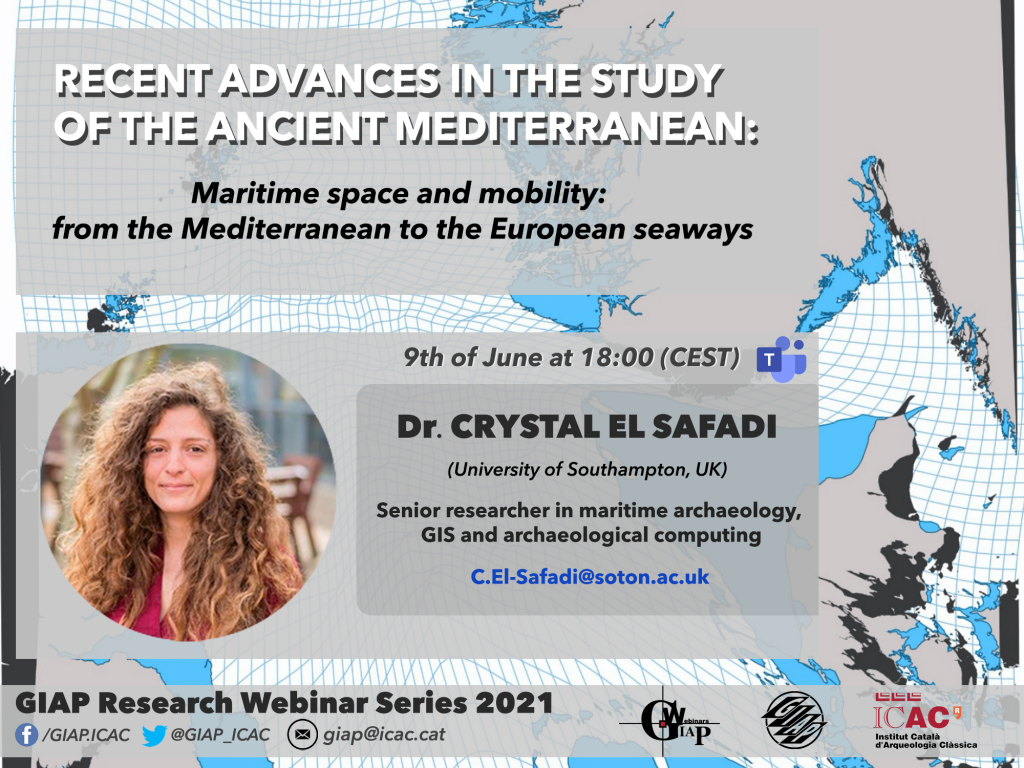Don’t miss this new webinar session of the series ‘Recent Advances in the Study of the Ancient Mediterranean’, managed by GIAP researchers!
They reflect on their current research interests and aim to provide examples of leading research that open up new horizons in landscape, computational and palaeoenvironmental archaeology, and bioarchaeology.
Session#6 will be hold next Wednesday, June 9th, 2021, at 18 h CEST.
‘Maritime space and mobility: from the Mediterranean to the European seaways‘
Dr Crystal El Safadi (University of Southampton). Senior researcher in maritime archaeology, GIS, and archaeological computing
Webinar will be held online, at this link. Open to public!
Abstract:
Maritime mobility has always been central to questions of prehistoric human dispersal, migration, occupation of islands, and exchange and trade in all its forms. Mobility presents itself in various scales, from frequent short-range travel to intermittent and long-distance voyages. Its particularities, however, are difficult to unpick.
Movement leaves ephemeral traces in the archaeological record, the identification of which can be made more challenging by depositional and post-depositional processes. Despite this, there is a certainty that mobility is the nexus of interaction and connectivity, and modeling approaches applied to seafaring and maritime connectivity in the past, underpinned by digital methodologies, have great potential for exploring its texture.
This paper demonstrates the use of digital tools within an interpretive framework of analysis to generate space-time textures of maritime mobility. It focuses on two regions of interest: the Levantine Basin during the Early Bronze Age, and north-western European seaways during the Neolithic.
By means of exploring these two areas of interest, this paper presents the main methodology of altering Cartesian space according to travel time, and how this approach can be enhanced and adapted to accommodate for additional variables and accessible datasets.






